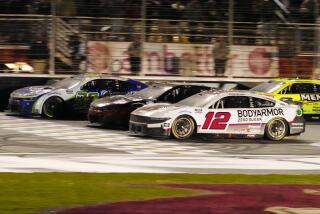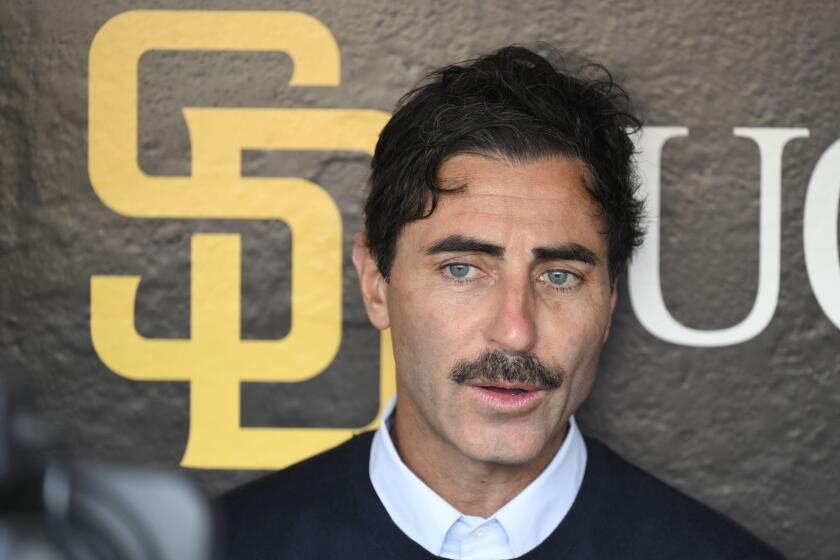NASCAR’s Tony Stewart has problem re-firing, finishes 22nd
Reporting from Avondale, Ariz. -- Reigning NASCAR Sprint Cup Series champion Tony Stewart got a rude lesson in this year’s arrival of electronic fuel injection in the series’ race cars.
With about 60 laps left in the Subway Fresh Fit 500 Sunday at Phoenix International Raceway, Stewart was running 13th and shut off his engine during a caution period to save fuel, a not-uncommon tactic.
But this time the engine in Stewart’s No. 14 Chevrolet wouldn’t re-fire despite repeated attempts. Stewart fell two laps down until his crew finally got the car started, and Stewart finished 22nd.
“I don’t know why it didn’t re-fire,” Stewart said.
Greg Biffle, who finished third, said Stewart wouldn’t be the last driver to have a problem this year with the new fuel-injected engines. “There’s going to be growing pains with this system,” Biffle said.
Ambrose’s engine failure
Australian driver Marcos Ambrose was trying to win his first Cup race on an oval track but, near the end, it went away in a puff of smoke.
Ambrose, who drives for Richard Petty Motorsports, was in third place with 18 laps left when the engine on his No. 9 Ford gave way. He finished 32nd.
“We blew up,” said Ambrose, who earned his sole career Cup victory on the twisty Watkins Glen, N.Y., road course last year.
“We are here trying to run for wins and run for championships, and to trip over ourselves like that, it just isn’t going to get it done,” he said.
Track jet dryers
NASCAR said pace cars with flashing lights will now trail jet-drying trucks during caution periods after a fiery incident at the Daytona 500 last week.
During that race, Juan Pablo Montoya’s Chevrolet suffered a broken part that caused the car to careen into one of the drying trucks, setting off a fireball that delayed the race for more than two hours. No one was injured.
More to Read
Go beyond the scoreboard
Get the latest on L.A.'s teams in the daily Sports Report newsletter.
You may occasionally receive promotional content from the Los Angeles Times.










